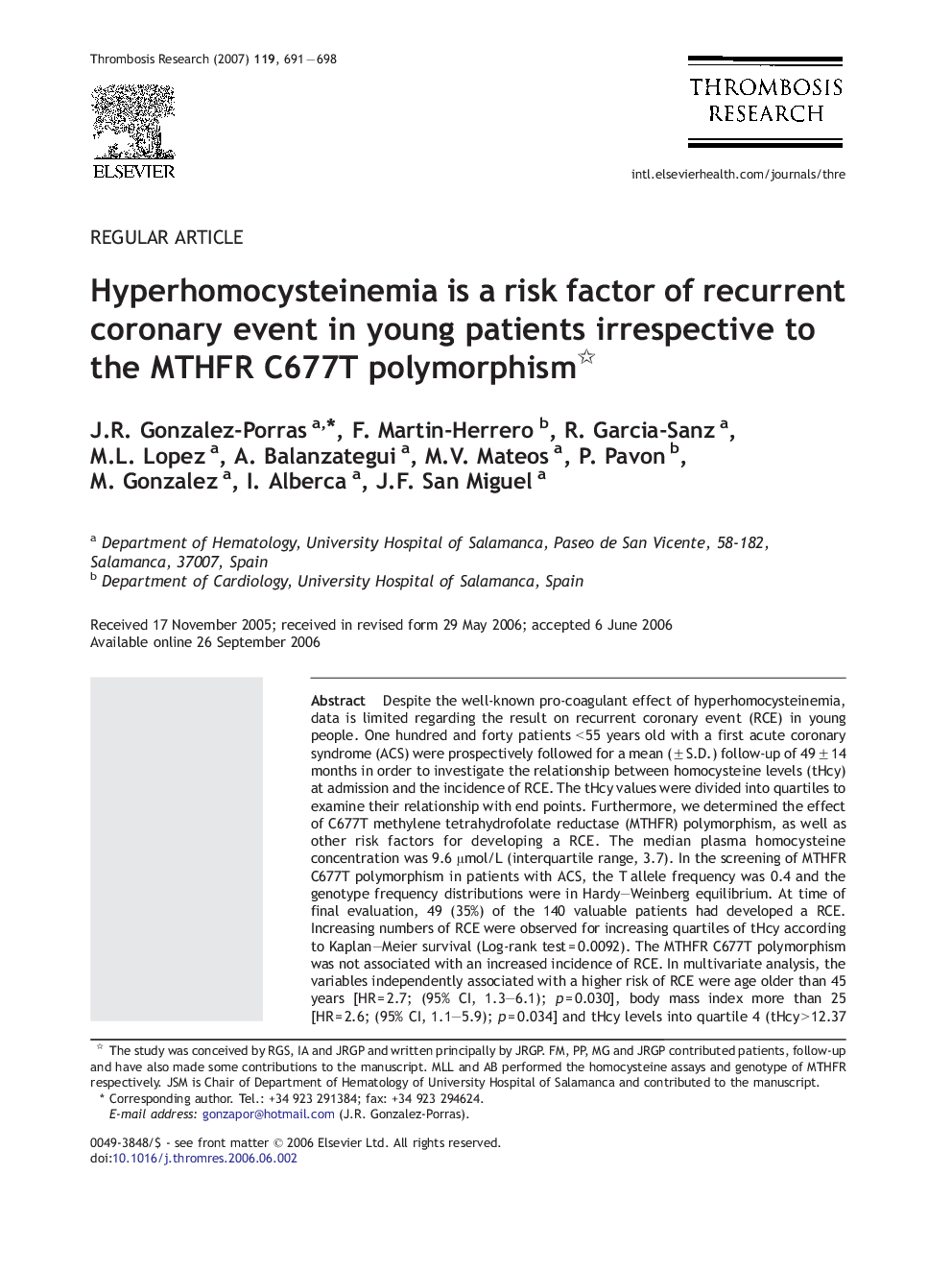| Article ID | Journal | Published Year | Pages | File Type |
|---|---|---|---|---|
| 3030125 | Thrombosis Research | 2007 | 8 Pages |
Despite the well-known pro-coagulant effect of hyperhomocysteinemia, data is limited regarding the result on recurrent coronary event (RCE) in young people. One hundred and forty patients < 55 years old with a first acute coronary syndrome (ACS) were prospectively followed for a mean (± S.D.) follow-up of 49 ± 14 months in order to investigate the relationship between homocysteine levels (tHcy) at admission and the incidence of RCE. The tHcy values were divided into quartiles to examine their relationship with end points. Furthermore, we determined the effect of C677T methylene tetrahydrofolate reductase (MTHFR) polymorphism, as well as other risk factors for developing a RCE. The median plasma homocysteine concentration was 9.6 μmol/L (interquartile range, 3.7). In the screening of MTHFR C677T polymorphism in patients with ACS, the T allele frequency was 0.4 and the genotype frequency distributions were in Hardy–Weinberg equilibrium. At time of final evaluation, 49 (35%) of the 140 valuable patients had developed a RCE. Increasing numbers of RCE were observed for increasing quartiles of tHcy according to Kaplan–Meier survival (Log-rank test = 0.0092). The MTHFR C677T polymorphism was not associated with an increased incidence of RCE. In multivariate analysis, the variables independently associated with a higher risk of RCE were age older than 45 years [HR = 2.7; (95% CI, 1.3–6.1); p = 0.030], body mass index more than 25 [HR = 2.6; (95% CI, 1.1–5.9); p = 0.034] and tHcy levels into quartile 4 (tHcy > 12.37 μmol/L) [HR = 2.5; (95% CI, 1.1–4.7); p = 0.04]. Elevated plasma homocysteine level at admission is an independent risk factor for RCE after the first episode of ACS in young patients irrespective of the status of MTHFR C677T.
